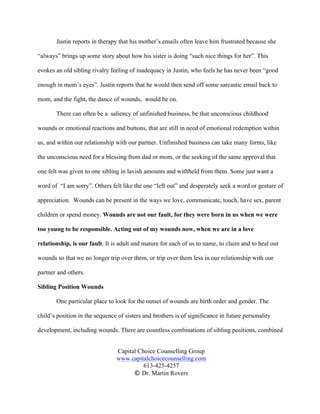This document discusses wounds that develop in childhood from dysfunctional family dynamics. It asserts that by age 6-10, wounds form within us from our parents, even if we move far away later in life. These wounds, or "holes in the sidewalk," represent unresolved issues that can cause us to repeat old relationship patterns. Examples are given of how wounds might present, such as through depression, addiction, or difficulty with intimacy. The document encourages addressing wounds through counseling in order to better accept ourselves and move forward in healthy relationships.


















